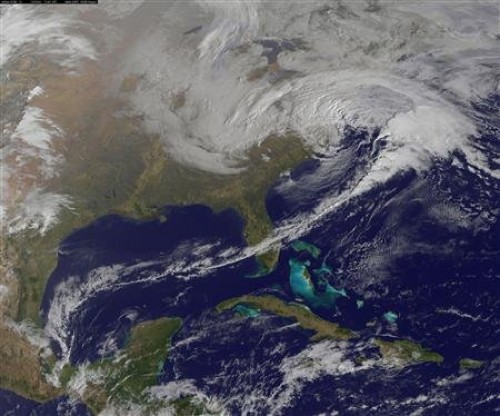
By Irene Klotz
CAPE CANAVERAL, Florida (Reuters) - A key satellite positioned to track severe weather in the eastern United States has failed, just as the 2013 Atlantic hurricane season is about to start.
The U.S. National Oceanic and Atmospheric Administration (NOAA) activated a spare satellite, which will provide coverage of the East Coast, while it is trying to fix the failed one, the agency said in a status report on its website on Friday.
"There is no estimate on return to operations at this time," NOAA said.
The Atlantic-Caribbean hurricane season starts on June 1 and lasts six months. NOAA expects this year's season to be "extremely active," with 13 to 20 tropical storms and seven to 11 of those strengthening into hurricanes.
The agency's three current Geostationary Operational Environmental Satellites, known as GOES, were built by Boeing and designed to last 10 years. The failed spacecraft, GOES-13, was launched in 2006.
NOAA typically operates two GOES spacecraft over the United States, overlooking the East and West coasts, plus one on-orbit spare. The satellites are outfitted with imagers to watch for clouds and developing storms, and atmospheric sounders to measure temperatures and humidity.
The first sign of trouble with GOES-13, the primary East Coast satellite, surfaced late Wednesday when it failed to relay expected images, NOAA status reports show.
GOES-13 is located over 75 degrees west longitude. Though activated, the spare remains in its storage orbit at 105 degrees west.
NOAA said it currently is not planning to drift the spare east, while efforts to troubleshoot its failed sister satellite are under way.
NOAA also has an older GOES-12 satellite, launched in 2001, parked at 60 degrees west that provides coverage of South America.
(Reporting by Irene Klotz; Editing by Jane Sutton and Eric Beech)